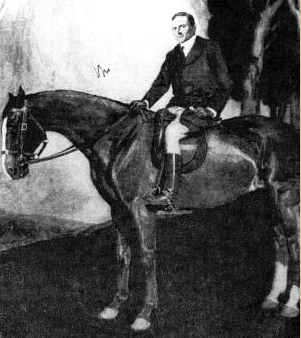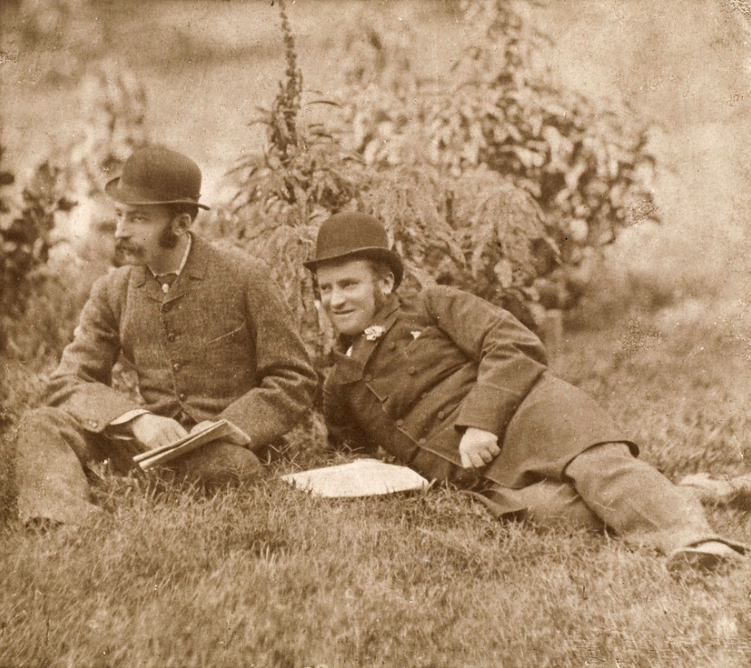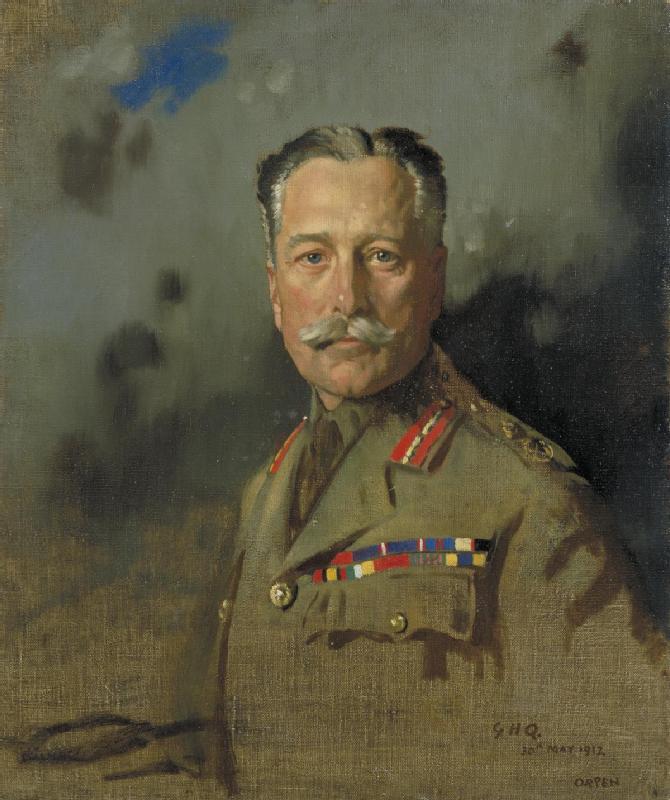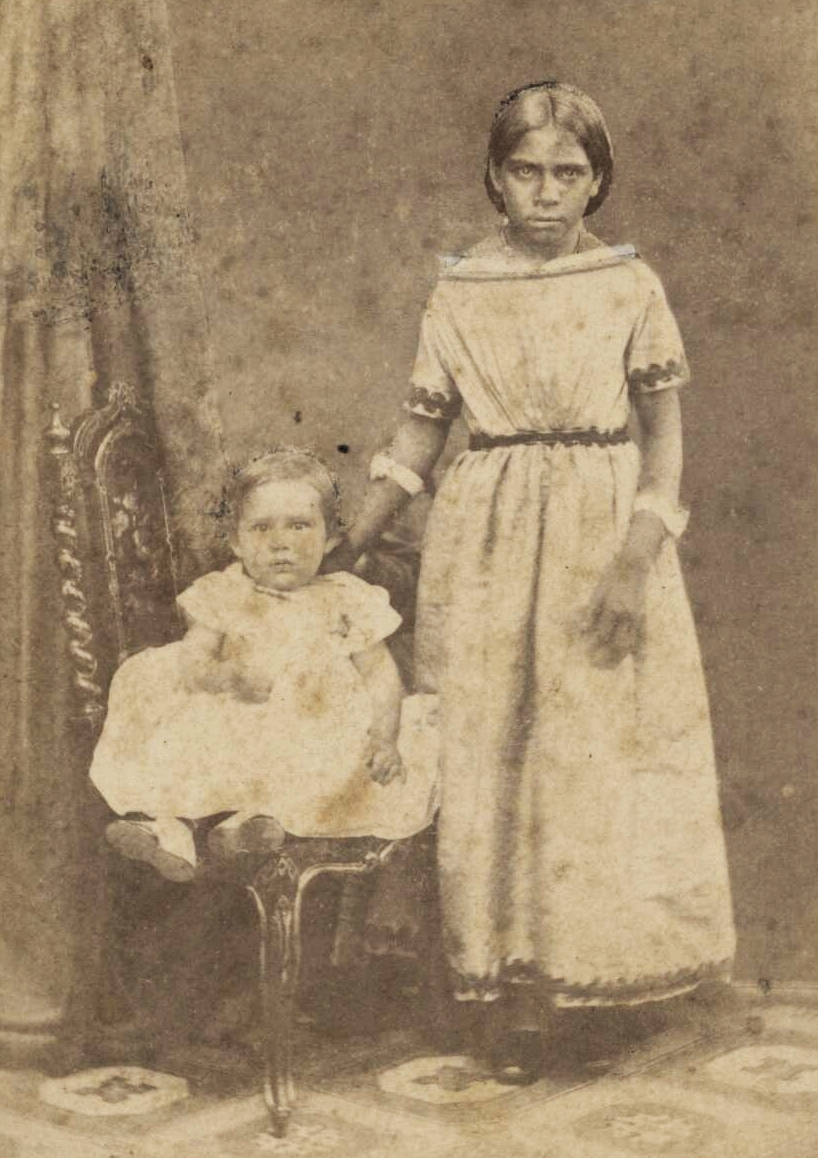|
Frank Fox (author)
Sir Frank Ignatius Fox (10 August 1874 – 1960) was an Australian-born journalist, soldier, author and campaigner; he lived in Britain from 1909. Early life and education Frank Ignatius Fox was born in 1874 in Adelaide, second son of Charles James Fox (editor), Charles James Fox, one-time Adelaide Educational Institution, Latin teacher, journalist and editor of ''The Irish Harp and Farmers' Herald'', and his wife Mary Ann (''née'' Toole). He moved to Hobart in 1883, when his father became editor of the ''Tasmanian Mail'', and was educated at Christ College (University of Tasmania), Christ College. At an early age he wrote paragraphs for his father's paper. Career Fox was appointed editor of ''The Australian Workman'' in 1893, then in 1895 the (Bathurst, New South Wales, Bathurst) ''National Advocate'', before joining ''The Age'', where he served as chief of their reporting staff. He joined the staff of the ''Sydney Bulletin'' in 1901 and was acting editor for a time. As "Fran ... [...More Info...] [...Related Items...] OR: [Wikipedia] [Google] [Baidu] |
Adelaide
Adelaide ( , ; ) is the list of Australian capital cities, capital and most populous city of South Australia, as well as the list of cities in Australia by population, fifth-most populous city in Australia. The name "Adelaide" may refer to either Greater Adelaide (including the Adelaide Hills) or the Adelaide city centre; the demonym ''Adelaidean'' is used to denote the city and the residents of Adelaide. The Native title in Australia#Traditional owner, traditional owners of the Adelaide region are the Kaurna, with the name referring to the area of the city centre and surrounding Adelaide Park Lands, Park Lands, in the Kaurna language. Adelaide is situated on the Adelaide Plains north of the Fleurieu Peninsula, between the Gulf St Vincent in the west and the Mount Lofty Ranges in the east. Its metropolitan area extends from the coast to the Adelaide Hills, foothills of the Mount Lofty Ranges, and stretches from Gawler in the north to Sellicks Beach in the south. Named in ho ... [...More Info...] [...Related Items...] OR: [Wikipedia] [Google] [Baidu] |
Sydney Bulletin
''The Bulletin'' was an Australian weekly magazine based in Sydney and first published in 1880. It featured politics, business, poetry, fiction and humour, alongside cartoons and other illustrations. ''The Bulletin'' exerted significant influence on Australian culture and politics, emerging as "Australia's most popular magazine" by the late 1880s. Jingoistic, xenophobic, anti-imperialist and republican, it promoted the idea of an Australian national identity distinct from its British colonial origins. Described as "the bushman's bible", ''The Bulletin'' helped cultivate a mythology surrounding the Australian bush, with bush poets such as Henry Lawson and Banjo Paterson contributing many of their best known works to the publication. After federation in 1901, ''The Bulletin'' changed owners multiple times and gradually became more conservative in its views while remaining an "organ of Australianism". Although its popularity declined after World War I, it continued to serve as ... [...More Info...] [...Related Items...] OR: [Wikipedia] [Google] [Baidu] |
Montreuil-sur-Mer
Montreuil-sur-Mer (; or ; ), Montreuil-on-the-Sea, is a subprefecture in the Pas-de-Calais Department in northern France. Though commonly called by this name since at least the twelfth century, it was legally known as Montreuil until 31 December 2022. It is located on the Canche river, not far from Étaples. The sea, however, is now some distance away. Montreuil-sur-Mer station has rail connections to Arras and Étaples. History Montreuil-sur-Mer is surrounded by notable brickwork ramparts, constructed after the destruction of the town by troops of Habsburg emperor Charles V in June 1537. These fortifications pre-date the extensive fortification of towns in northern France by Sébastien Le Prestre de Vauban in the 17th century. Montreuil-sur-Mer was the headquarters of the British Army in France during the First World War from March 1916 until it closed in April 1919. The military academy there provided excellent facilities for GHQ. Montreuil-sur-Mer was chosen as GHQ ... [...More Info...] [...Related Items...] OR: [Wikipedia] [Google] [Baidu] |
War Office
The War Office has referred to several British government organisations throughout history, all relating to the army. It was a department of the British Government responsible for the administration of the British Army between 1857 and 1964, at which point its functions were transferred to the new Ministry of Defence (United Kingdom), Ministry of Defence (MoD). This article contains text from this source, which is available under th Open Government Licence v3.0 © Crown copyright It was equivalent to the Admiralty (United Kingdom), Admiralty at that time, which was responsible for the Royal Navy (RN), and (much later) the Air Ministry, which oversaw the Royal Air Force (RAF). The name 'Old War Office' is also given to the former home of the department, located at the junction of Horse Guards Avenue and Whitehall in central London. The landmark building was sold on 1 March 2016 by HM Government for more than British pound, £350 million, on a 250-year lease for conversion int ... [...More Info...] [...Related Items...] OR: [Wikipedia] [Google] [Baidu] |
Battle Of The Somme
The Battle of the Somme (; ), also known as the Somme offensive, was a battle of the First World War fought by the armies of the British Empire and the French Third Republic against the German Empire. It took place between 1 July and 18 November 1916 on both sides of the upper reaches of the river Somme (river), Somme in France. The battle was intended to hasten a victory for the Allies of World War I, Allies. More than three million men fought in the battle, of whom more than one million were either wounded or killed, making it one of the List of battles by casualties, deadliest battles in human history. The French and British had planned an offensive on the Somme during the Chantilly Conferences, Chantilly Conference in December 1915. The Allies agreed upon a strategy of combined offensives against the Central Powers in 1916 by the French, Russian, British and Italian armies, with the Somme offensive as the Franco-British contribution. The French army was to undertake the m ... [...More Info...] [...Related Items...] OR: [Wikipedia] [Google] [Baidu] |
Royal Field Artillery
The Royal Field Artillery (RFA) of the British Army provided close artillery support for the infantry. It was created as a distinct arm of the Royal Regiment of Artillery on 1 July 1899, serving alongside the other two arms of the regiment, the Royal Horse Artillery (RHA) and the Royal Garrison Artillery (RGA). It ceased to exist when it was amalgamated with the Royal Garrison Artillery in 1924. The Royal Field Artillery was the largest arm of the artillery. It was responsible for the medium calibre guns and howitzers deployed close to the front line and was reasonably mobile. It was organised into brigades, attached to divisions or higher formation The Royal Field Artillery grew dramatically during the First World War, reaching a size of over three hundred thousand men and more than 400 batteries by 1917. Notable members * Ernest Wright Alexander, Victoria Cross recipient * Tom Barry, served in Mesopotamian campaign * Ralph Chetwynd (1890-1957), Canadian businessman and politi ... [...More Info...] [...Related Items...] OR: [Wikipedia] [Google] [Baidu] |
Morning Post
''The Morning Post'' was a conservative daily newspaper published in London from 1772 to 1937, when it was acquired by ''The Daily Telegraph''. History The paper was founded by John Bell. According to historian Robert Darnton, ''The Morning Post'' scandal sheet consisted of paragraph-long news snippets, much of it false. Its original editor, the Reverend Sir Henry Bate Dudley, earned himself nicknames such as "Reverend Bruiser" or "The Fighting Parson", and was soon replaced by an even more vitriolic editor, Reverend William Jackson, also known as "Dr. Viper". Originally a Whig paper, it was purchased by Daniel Stuart in 1795, who made it into a moderate Tory organ. A number of well-known writers contributed, including Samuel Taylor Coleridge, Charles Lamb, James Mackintosh, Robert Southey, Mary Robinson, and William Wordsworth. In the seven years of Stuart's proprietorship, the paper's circulation rose from 350 to over 4,000. From 1803 until his death in 1833, the o ... [...More Info...] [...Related Items...] OR: [Wikipedia] [Google] [Baidu] |
The Sydney Morning Herald
''The Sydney Morning Herald'' (''SMH'') is a daily Tabloid (newspaper format), tabloid newspaper published in Sydney, Australia, and owned by Nine Entertainment. Founded in 1831 as the ''Sydney Herald'', the ''Herald'' is the oldest continuously published newspaper in Australia and claims to be the most widely read masthead in the country. It is considered a newspaper of record for Australia. The newspaper is published in Compact (newspaper), compact print form from Monday to Saturday as ''The Sydney Morning Herald'' and on Sunday as its sister newspaper, ''The Sun-Herald'' and digitally as an Website, online site and Mobile app, app, seven days a week. The print edition of ''The Sydney Morning Herald'' is available for purchase from many retail outlets throughout the Sydney metropolitan area, most parts of regional New South Wales, the Australian Capital Territory and South East Queensland. Overview ''The Sydney Morning Herald'' publishes a variety of supplements, including ... [...More Info...] [...Related Items...] OR: [Wikipedia] [Google] [Baidu] |
Norman Lindsay
Norman Alfred William Lindsay (22 February 1879 – 21 November 1969) was an Australian artist, etcher, sculptor, writer, art critic, novelist, cartoonist and amateur boxing, boxer. One of the most prolific and popular Australian artists of his generation, Lindsay attracted both acclaim and controversy for his works, many of which infused the Australian landscape with erotic paganism, pagan elements and were deemed by his critics to be "anti-Christian, anti-social and degenerate". A vocal Australian nationalism, nationalist, he became a regular artist for ''The Bulletin (Australian periodical), The Bulletin'' at the height of its cultural influence, and advanced staunchly anti-modern art, modernist views as a leading writer on Australian art. When friend and literary critic Bertram Stevens (critic), Bertram Stevens argued that children like to read about fairies rather than food, Lindsay wrote and illustrated ''The Magic Pudding'' (1918), now considered a classic work of Austr ... [...More Info...] [...Related Items...] OR: [Wikipedia] [Google] [Baidu] |
Banjo Paterson
Andrew Barton "Banjo" Paterson, (17 February 18645 February 1941) was an Australian bush poet, journalist and author, widely considered one of the greatest writers of Australia's colonial period. Born in rural New South Wales, Paterson worked as a lawyer before transitioning into literature, where he quickly gained recognition for capturing the life of the Australian bush. A representative of the Bulletin School of Australian literature, Paterson wrote many of his best known poems for the nationalist journal '' The Bulletin'', including " Clancy of the Overflow" (1889) and " The Man from Snowy River" (1890). His 1895 ballad "Waltzing Matilda" is regarded widely as Australia's unofficial national anthem and, according to the National Film and Sound Archive, has been recorded more than any other Australian song. Early life Andrew Barton Paterson was born on 17 February 1864 at the property "Narrambla", near Orange, New South Wales, the eldest son of Andrew Bogle Paterson, a ... [...More Info...] [...Related Items...] OR: [Wikipedia] [Google] [Baidu] |









